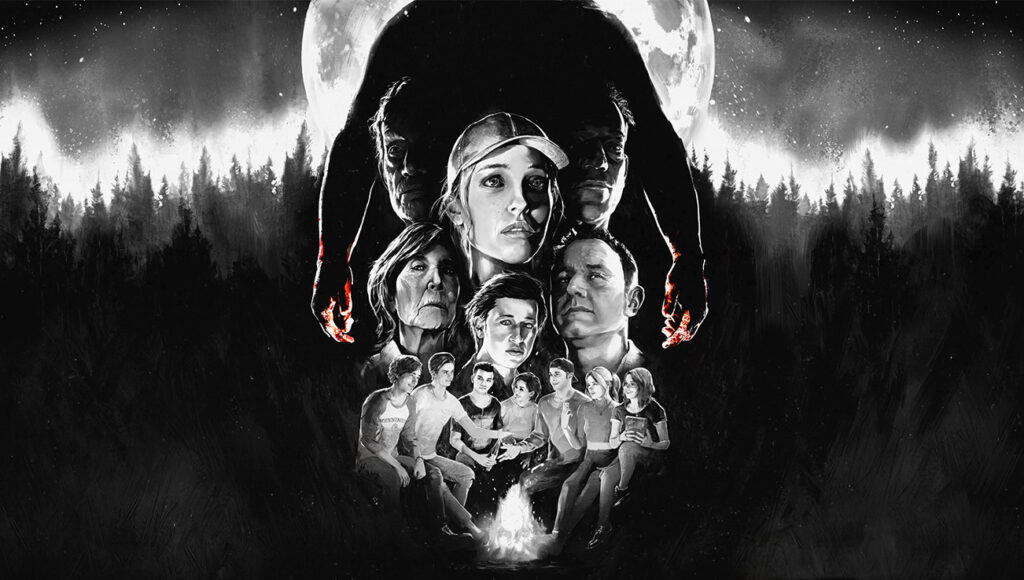The Hitman video game series, developed by IO Interactive, stands as a monumental testament to the evolution of stealth-based gameplay. From its debut in 2000, Hitman has captivated gamers with its unique blend of meticulous planning, improvisational strategy, and a gripping narrative centered around its enigmatic protagonist, Agent 47. This article will provide an in-depth analysis of each game in the series, exploring game mechanics, storyline, and characters, alongside a commentary on the impact, success, and psychological journey of Agent 47. Additionally, we will touch upon the movie adaptations and their reception.

Hitman: Codename 47 (2000)
Game Mechanics
“Hitman: Codename 47,” the inaugural title of the series, introduced players to a new genre of stealth gameplay. The game emphasizes strategy and planning, requiring players to navigate complex environments, gather intel, and execute targets with precision. It features an array of weapons, disguises, and gadgets that allow players to approach each mission in multiple ways.
Storyline and Characters
The game sets the stage for Agent 47’s story, revealing him as a genetically engineered assassin created by Dr. Otto Wolfgang Ort-Meyer. The plot unfolds through a series of missions that take 47 across various global locations, each revealing more about his origins and the shadowy organization behind his creation.
Impact and Success
“Codename 47” was lauded for its innovative gameplay and intricate level design, though it faced criticism for its steep learning curve and technical issues. Despite this, it established a strong foundation for future installments, earning a dedicated fan base.
Psychological Story Arc
Agent 47 is portrayed as a cold, methodical killer, but “Codename 47” hints at his struggle with identity and purpose. His interactions with characters like Diana Burnwood, his handler, provide glimpses into his evolving psyche, setting the stage for his character development in subsequent games.

Hitman 2: Silent Assassin (2002)
Game Mechanics
“Hitman 2: Silent Assassin” refined the gameplay mechanics of its predecessor, introducing a more user-friendly interface and enhanced AI behavior. The addition of a rating system based on stealth and precision encouraged players to complete missions with minimal collateral damage, promoting a more strategic approach.
Storyline and Characters
The narrative continues with 47’s attempt to leave his past behind, living as a gardener in Sicily. However, he is forced back into the life of an assassin when his mentor, Father Vittorio, is kidnapped. The game explores themes of redemption and morality as 47 navigates a series of missions to save Vittorio and unravel a conspiracy.
Impact and Success
“Silent Assassin” received widespread acclaim for its improvements over the first game, particularly in terms of gameplay mechanics and narrative depth. It solidified the series’ reputation and expanded its player base, becoming a commercial success.
Psychological Story Arc
This installment delves deeper into 47’s internal conflict. His desire for a peaceful life juxtaposed with his inherent skills as an assassin creates a compelling tension. The game’s conclusion, where 47 chooses to embrace his identity as a hitman, marks a significant turning point in his psychological journey.

Hitman: Contracts (2004)
Game Mechanics
“Hitman: Contracts” revisits and reimagines missions from “Codename 47” while introducing new ones. The game enhances its predecessor’s mechanics with improved graphics, AI, and a darker, more atmospheric tone. The focus on replayability is evident through the multiple ways to approach each mission.
Storyline and Characters
The plot is framed by 47’s reflections on past assignments while recovering from a near-fatal wound. This introspective narrative structure allows players to experience key moments from 47’s career, providing deeper insight into his character and motivations.
Impact and Success
“Contracts” was praised for its mature tone, engaging missions, and refined mechanics. It served as both a retrospective and a progression for the series, bridging the gap between “Silent Assassin” and future titles.
Psychological Story Arc
The game’s retrospective nature offers a profound exploration of 47’s psyche. As he revisits his past, players witness his detachment and professionalism, but also subtle hints of vulnerability and introspection. This nuanced portrayal adds layers to his character, emphasizing the complexity of his psychological landscape.

Hitman: Blood Money (2006)
Game Mechanics
“Hitman: Blood Money” is often considered a pinnacle of the series. It introduced a wealth of new features, including the notoriety system, enhanced AI, and more interactive environments. Players could now manipulate accidents to eliminate targets, adding a new dimension to strategic planning.
Storyline and Characters
The narrative follows 47 as he uncovers a plot against the International Contract Agency (ICA). The story is told through a series of flashbacks, culminating in a dramatic showdown. New characters, such as rival assassin Mark Parchezzi III, add intrigue and depth to the storyline.
Impact and Success
“Blood Money” was a critical and commercial success, celebrated for its innovative mechanics, engaging story, and replayability. It remains a fan favorite and a high point in the series, often cited as one of the best stealth games ever made.
Psychological Story Arc
This game further explores 47’s role as a master assassin, emphasizing his professional pride and meticulous nature. The story’s climax, where 47 fakes his own death to escape his enemies, underscores his resourcefulness and resilience, highlighting the psychological toll of his relentless life.

Hitman: Absolution (2012)
Game Mechanics
“Hitman: Absolution” marked a significant shift in gameplay, incorporating more action-oriented elements alongside traditional stealth mechanics. The introduction of Instinct Mode allowed players to highlight enemies and objects of interest, making the game more accessible to new players.
Storyline and Characters
The plot centers around 47’s quest to protect a young girl named Victoria, created as a genetically engineered assassin like himself. This personal mission against his former employers adds emotional depth to the narrative, exploring themes of loyalty, sacrifice, and redemption.
Impact and Success
“Absolution” received mixed reviews, with praise for its graphics, voice acting, and story, but criticism for its linear level design and departure from the series’ traditional open-ended gameplay. Despite this, it introduced the series to a broader audience and showcased 47’s versatility.
Psychological Story Arc
This installment provides a more personal glimpse into 47’s character, highlighting his protective instincts and capacity for empathy. His determination to save Victoria reflects his desire for redemption and a legacy beyond that of a cold-blooded killer, enriching his psychological profile.

Hitman (2016)
Game Mechanics
The 2016 reboot, titled simply “Hitman,” returned to the series’ roots with an episodic release structure and expansive, sandbox-style levels. Players were given unprecedented freedom to approach missions, with a focus on creativity and improvisation. The game’s live content updates, including Elusive Targets, kept the experience fresh and dynamic.
Storyline and Characters
The reboot’s story is told across six episodes, with 47 and Diana Burnwood uncovering a shadowy organization known as Providence. The narrative intricately weaves together the past and present, introducing new characters like the mysterious Shadow Client while deepening the lore of the Hitman universe.
Impact and Success
“Hitman” was hailed as a triumphant return to form, blending the best elements of previous games with modern innovations. Its episodic format and ongoing content updates engaged players over an extended period, cementing its success both critically and commercially.
Psychological Story Arc
The episodic structure allowed for a gradual exploration of 47’s character. His unwavering loyalty to Diana and the ICA, coupled with his growing awareness of Providence’s machinations, adds layers to his psychological journey. This game emphasizes 47’s role as both a weapon and a man seeking understanding of his place in a complex world.

Hitman 3 (2021)
Game Mechanics
“Hitman 3” serves as the conclusion to the World of Assassination trilogy, offering polished gameplay mechanics, stunning visuals, and intricate level design. The addition of VR support and new gameplay elements like persistent shortcuts further enhance the player experience.
Storyline and Characters
The narrative concludes the arc begun in 2016, with 47 and Diana taking on Providence’s leadership. The story is filled with twists and turns, culminating in a satisfying resolution that ties together the trilogy’s themes of loyalty, betrayal, and redemption.
Impact and Success
“Hitman 3” was a critical and commercial success, lauded for its gameplay, story, and replayability. It provided a fitting conclusion to the trilogy, cementing the series’ legacy as a benchmark in the stealth genre.
Psychological Story Arc
The final installment offers a poignant exploration of 47’s character, highlighting his growth and the choices that define him. The resolution of his relationship with Diana and his confrontation with Providence bring his psychological journey full circle, emphasizing themes of identity, agency, and redemption.

Movie Adaptations
The Hitman series has seen two movie adaptations: “Hitman” (2007) and “Hitman: Agent 47” (2015). Both films attempted to capture the essence of the games but received mixed reviews.
Hitman (2007)
Starring Timothy Olyphant as Agent 47, the film follows a loose adaptation of the game’s narrative, focusing on 47’s mission to uncover a conspiracy. While Olyphant’s performance was praised, the film was criticized for its weak plot and lack of depth, failing to capture the intricacies of 47’s character and the game’s strategic elements.


Hitman: Agent 47 (2015)
Rupert Friend took on the role of 47 in this reboot, which aimed to be more faithful to the games. Despite improved action sequences and a closer adherence to the source material, the film was again met with mixed reviews. Critics pointed to its lack of character development and narrative coherence, highlighting the challenge of translating the game’s complex storytelling to the big screen.
Conclusion
The Hitman series stands as a testament to the evolution of stealth gameplay, with each installment refining and expanding upon its predecessors. From the groundbreaking mechanics of “Codename 47” to the intricate, narrative-driven experiences of the World of Assassination trilogy, Hitman has consistently pushed the boundaries of the genre.
At the heart of this series is Agent 47, a character whose psychological journey adds depth and nuance to the games. His struggle with identity, morality, and purpose resonates with players, making him one of the most compelling protagonists in gaming history.
While the movie adaptations have struggled to capture the essence of the games, the legacy of Hitman remains strong, influencing countless other titles and leaving an indelible mark on the gaming landscape. As we reflect on 47’s journey, it is clear that his story is one of complexity, resilience, and the search for meaning in a world of shadows.









